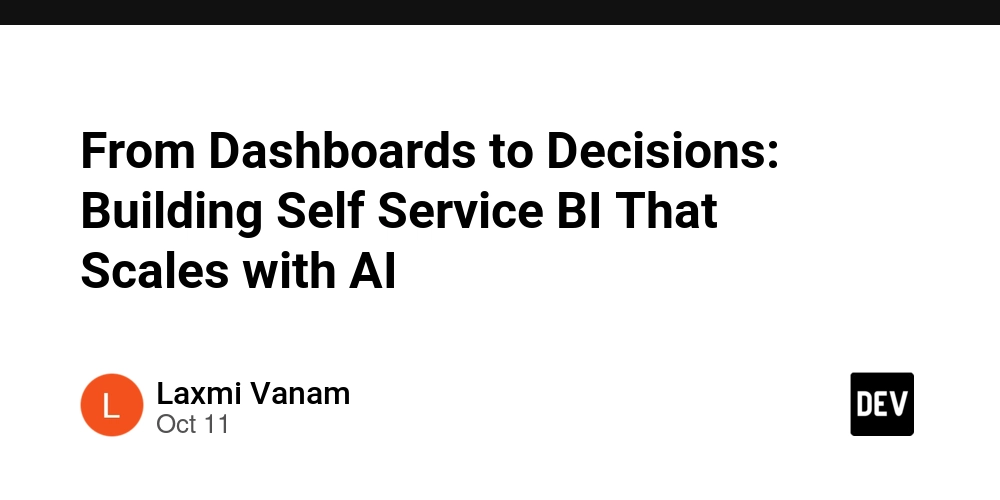In most enterprises today, dashboards are everywhere, yet decisions are still delayed. The promise of a data driven culture often stops at visualization, not execution. As analytics leaders, our next frontier is to move beyond dashboards to decisions by empowering users with intelligence that not only informs but acts.
This is the evolution of Self Service BI 2.0 – where human intuition meets AI driven orchestration.
1. The Problem with Traditional Self Service BI
Early self service BI tools democratized access to data but created fragmentation. Teams built reports that looked good but were not scalable, governed, or real time.
Common pitfalls include:
Manual data preparation and inconsistent metrics
Redundant dashboards with overlapping logic
Slow insights when business questions evolve faster than data models
In short, BI became a reporting tool, not a decision enabler.
2. The Shift: From Static Visualization to Dynamic Intelligence
True modernization requires three elements:
Automation — reduce manual refreshes, data preparation, and maintenance.
AI orchestration — integrate intelligent agents to interpret context and recommend actions.
Scalability — align all datasets under governed, reusable semantic layers.
Imagine a BI system that does not just show sales dips — it explains why, predicts impact, and triggers alerts or actions across connected systems. That is the intelligence layer enterprises are now building.
3. Designing the Architecture
A scalable, AI enabled self service BI architecture blends five key components:
| Layer | Description | AI Augmentation |
|---|---|---|
| Data Ingestion | Unified ingestion through pipelines, streaming, and APIs. | Predictive workload balancing |
| Data Modeling | Centralized semantic models and business logic. | Automated modeling and anomaly detection |
| Visualization | Modular dashboards powered by governed data. | Generative summaries for narratives |
| Action Layer | Integrations with CRM, ERP, and marketing systems. | AI agents to trigger next best actions |
| Governance | Role based access, lineage, and monitoring. | Automated compliance checks |
This architecture turns BI from a visual layer into a decision fabric by connecting insights directly to operations.
4. How AI Supercharges Decision Intelligence
AI does not replace analysts — it amplifies them.
Here is how:
Cognitive Augmentation: AI interprets business questions and maps them to datasets.
Automated Storytelling: Generative models explain insights in plain language.
Proactive Insights: Predictive models detect patterns and alert users before an issue escalates.
Adaptive Learning: Systems learn from recurring decisions to refine recommendations.
When done right, AI transforms BI into a closed loop — insight, action, outcome, and learning.
5. Lessons from the Field
Through modernization programs, a few universal truths emerge:
Governance fuels innovation — not the other way around.
Business adoption depends on narrative, not numbers.
Automation scales trust. When users see accuracy and timeliness, adoption accelerates.
These lessons shaped frameworks I have implemented across finance, insurance, and consulting domains, reducing manual workloads by over 40 percent, improving digital adoption, and unlocking measurable value through decision automation.
6. The Road Ahead
As we enter the age of intelligent agents, the next evolution of BI will be autonomous decision orchestration — where every dataset, dashboard, and model converges into an intelligent system that thinks, acts, and learns.
The future is not Self Service BI. It is Self Driven Intelligence.



